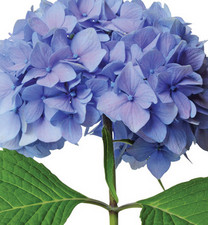No. 8: An enduring hydrangea

Summer is in full bloom, and so are hydrangeas. It used to be that the big and brilliant flowers would fade after a few weeks, disappearing until next year. But a University of Georgia scientist introduced the world to a hydrangea with enduring beauty – and garden centers have never been the same.
The story begins in September 1998. Michael Dirr was touring a Minnesota nursery when something unusual caught his eye: A hydrangea in full bloom outdoors, just before the arrival of autumn.
“I said, ‘Do you know what you have here?’” he recalls. “While the plants had been growing there for several years, the nursery was planning to just bulldoze the shrubs.”
He brought cuttings of the Hydrangea macrophylla back to UGA, and over the next couple of years he exposed it to a wide variety of conditions. To Dirr’s amazement, it continued to bloom on new growth, and he named the flower Endless Summer®.
He didn’t stop there. Dirr and his team genetically crossed the variety with the Japanese Veitchii, the only Hydrangea macrophylla cultivar known to resist mildew. The result was a white mop head hydrangea that re-bloomed as well as resisted fungus. It became known as Blushing Bride.
In the years that followed, Dirr continued to blend the genes of re-blooming hydrangeas to give rise to a whole new market of hardier flowers. As of today, he has been instrumental in introducing 150 new plants into the horticulture trade, more than 50 of which have U.S. patents.
Beyond extending summer a little longer, Dirr’s enterprising work helped drive a surge in the sale of hydrangeas nationwide. In 2012, more than half of all hydrangeas sold in the U.S. could be attributed to Dirr’s cultivars. As he grew a flower, he also grew an industry.
